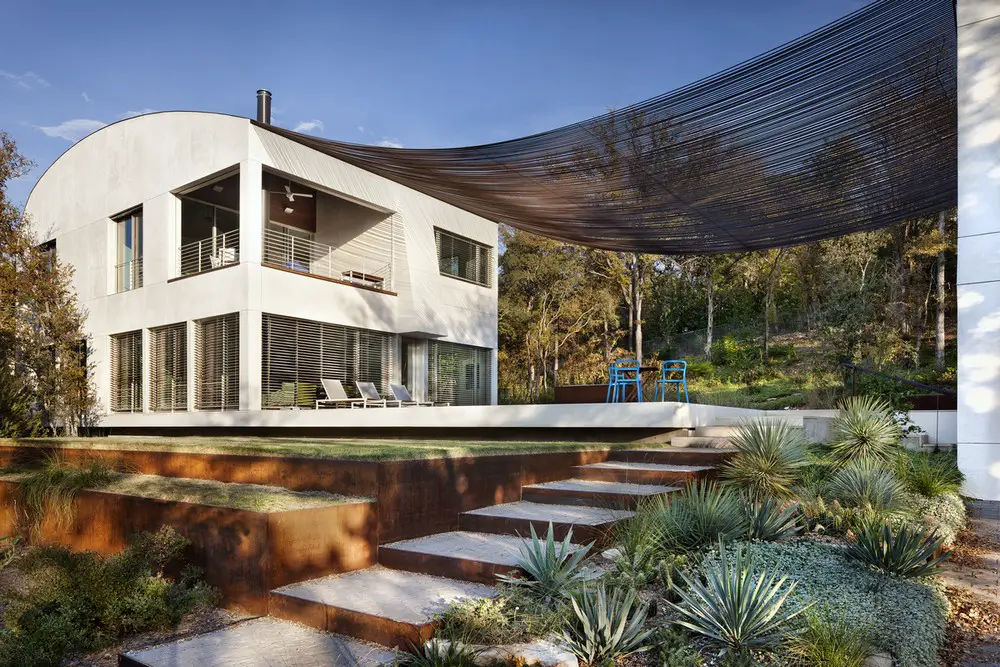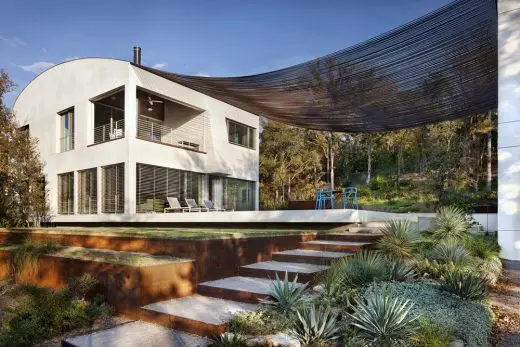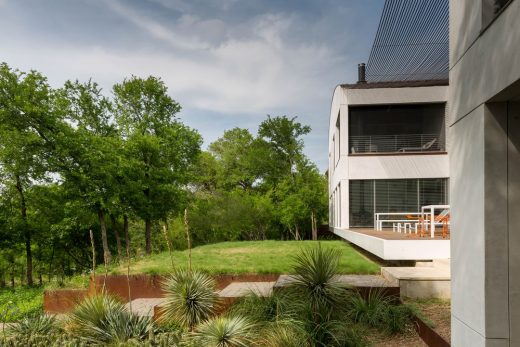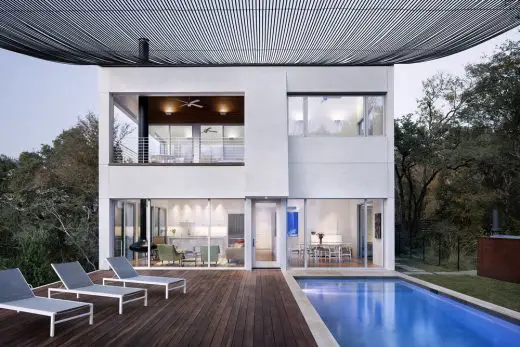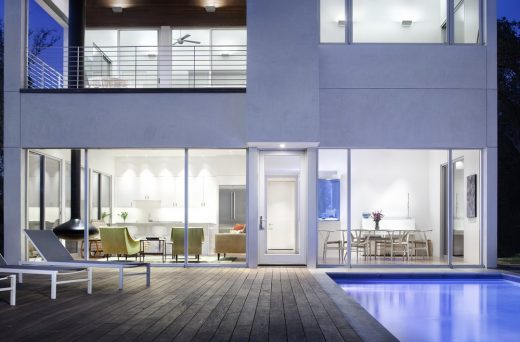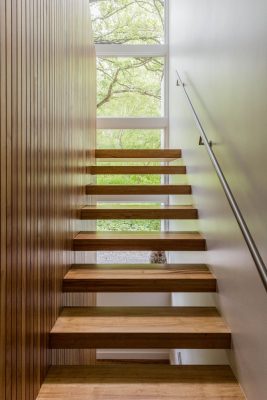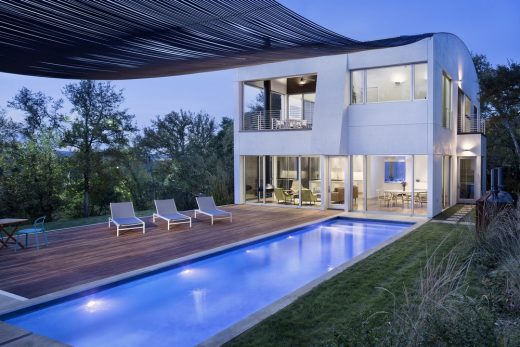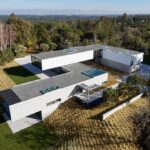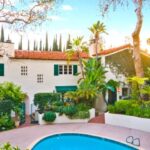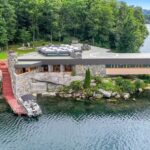Westridge Residence, Sustainable Texas Home, Austin House Building Project, TX Architecture Photos
Westridge Residence in Austin
Sustainable Real Estate Development in Texas, USA design by Miró Rivera Architects
Nov 25, 2019
Architecture: Miró Rivera Architects
Location: Austin, Texas, United States of America
Westridge Residence, TX
The Westridge Residence represents the intersection of inspiring design and exceptional sustainability. Built for a family of four, the design focuses on two compact structures—a main house and detached garage with a guest apartment—linked by a trellis of rebar suspended in a natural catenary curve.
The home was designed to enable and enhance harmonious living, with the intent to create a space where interaction with the outdoors is at the crux of daily life. Situated on the flattest portion of a wooded, sloping site, the residence basks in natural light and enjoys a sense of openness. Every space was designed to have a unique connection to the outdoors: large windows in every room; a sheltered open-air deck on the upper level; and an expansive outdoor deck flanked by the pool and lawn.
The main house contains an open living/dining/kitchen area and master suite on the ground floor. Full-height sliding doors in the open living area and a rotating, suspended fireplace allow the side of the house facing the deck to be completely opened up to the outdoors. A canarywood staircase leads to the upper floor, which houses two bedrooms, a playroom with a kitchenette, small media room, exercise/meditation space (convertible to another bedroom), and an open-air deck with views over the sloping property. The tall ceilings created by the curving roofline allowed for the addition of a small loft space accessed by a ladder in one of the children’s bedrooms.
The detached guest house provides a model for seamlessly incorporating accessory dwelling units (ADUs) into site planning and architectural design. The lower level has an open-air carport, workshop, and storeroom. A weathering steel staircase with Ipei treads leads up to a home office and guest apartment with bathroom and kitchenette. The mechanical system for the unit is separated from the main house, allowing for minimal energy usage when it is unoccupied.
The two buildings are linked by an Ipei deck that runs parallel to a 40-foot long swimming pool. The resulting “dog trot” that separates the two structures allows views through the house to the steep, wooded slope beyond, and for the family to enjoy views of the site from the pool, deck, and a small “front lawn” of native buffalo grass. Overhead spans the home’s most distinctive design feature: a canopy of closely-space 1/2″ rebar strands that provides shade to the outdoor spaces while visually completing the curving rooflines of the main and guest houses. Weathering steel reappears at the built-in barbecue pit and as edging for a series of planters that steps down to the driveway and entry gate.
The home is located in South Austin on a site with steep slopes and a broad canopy of existing trees. The long axis of the design follows the contours of the site, allowing for minimal disruption to the existing landscape and taking advantage of the tall foundation to create a functional basement that is used for storage and laundry. Taking advantage of the large site, a quarter-mile walking trail wanders down from the house, passing a limestone spring and pool and winding through an elm woodland, remnant prairie, and cedar break.
Sustainability
Compared to an energy model from a baseline case study, the home uses 22% less energy annually. A 6.8-kiloWatt rooftop photovoltaic system generates an estimated 13,977 kWh each year, accounting for nearly 40% of the home’s total annual energy usage. A geothermal loop field consisting of five 250-foot deep wells handles five tons of heating and cooling load. All mechanical equipment and ductwork is located within the building envelope, and leakage from the house’s air distribution system is no greater than 5% as ascertained by the duct-blaster testing method. The home’s “double wall” construction utilizes “total fill” insulation, resulting in R-21 walls and R-30 ceilings.
The home uses Energy Star-qualified lighting fixtures and appliances, and meets all Energy Star Advanced Lighting package requirements. The home makes extensive use of low-voltage LED lighting inside, while all exterior lighting has motion detectors with photocell controllers or is solar-powered. All exterior light fixtures are designed to reduce up-lighting/light pollution.
The site is located in the Barton Springs/Edwards Aquifer Conservation District, which mandated strict management of all water on site. A significant portion of the site spanning north-south downhill from the house is a dedicated biofiltration field that naturally retains and/or filters rainwater as it makes its way toward Barton Creek. In addition, permanent erosion control measures are employed across the site.
The deck that connects the two structures conceals five 2,000-gallon rainwater storage tanks. The collected rainwater is used for irrigation and to compensate for seasonal evaporative loss in the swimming pool. The landscape of primarily native and adapted species reduces the need for potable water used for irrigation. Inside, high-efficiency plumbing fixtures and appliances reduce the amount of potable water used by the owners for everyday activities.
As the builders, the architects worked to develop a waste-management plan to address the disposal of unused materials, and any waste produced on site. Through careful planning of the construction sequence and thoughtful material selections, typical construction waste was minimized, mitigated, or eliminated. In the end, 83% of construction waste by weight was recycled or salvaged. The dimensions of the exterior structure are in modules of 4 feet and “advanced framing” methods were used to reduce construction waste. Modular window sizes simplified the framing and fabrication process. At least 50% of the materials for framing, sheathing, and decking are FSC-certified engineered products or lumber. The flooring in the residence is made of 100% durable material, and in the majority of spaces the structural floor doubles as the finish floor.
The project uses durable and long-lasting materials to extend the life of the structure and minimize long-term maintenance. Stucco siding and a standing-seam metal roof provide easily-cleaned, weather-resistant surfaces that will not require any sort of frequent re-finishing, replacing, or treatment. Aluminum-clad wood windows and aluminum sliding doors provide daylight without sacrificing durability and longevity. This daylighting in-turn minimizes the need for and maintenance of electrical lighting, increasing the lifetime of light fixtures. The owners participate fully in the City’s recycling and composting programs.
In order to minimize environmental impact, measures were taken to ensure that no hazardous materials were used in constructing the residence. All interior wall and ceiling paints contained 10 g/l or less of volatile organic compounds (VOCs), and the majority of those contained none. The insulation has no added formaldehyde.
A landscape approach utilizing over 100 native species was chosen to complement and enrich the 1.3-acre site’s native prairie and woodland species. An analysis of existing vegetation on the site prior to construction identified 90 native species and 28 non-native and invasive species. All invasive plants were replaced with native species, while the existing native plant communities were maintained and enhanced.
The large native plant pallet provides a rich, intricate, and diverse habitat for wildlife that changes through the seasons. The naturalistic planting of local native species in their appropriate niches, without the use of soil amendments or fertilizers in either the planting or subsequent years of maintenance, has resulted in a truly sustainable landscape with virtually no plant replacement necessary.
Westridge Residence, Austin, TX – Building Information
Architecture: Miró Rivera Architects
Project size: 5800 ft2
Site size: 58500 ft2
Building levels: 2
Photography: Cris DeWitt and Paul Finkel
Westridge Residence in Austin, Texas information / images received 251119 from Miró Rivera Architects
Location: Austin, Texas, USA
Architecture in Texas
Contemporary Texan Buildings
Residence 1446 in Austin
Design: Miró Rivera Architects
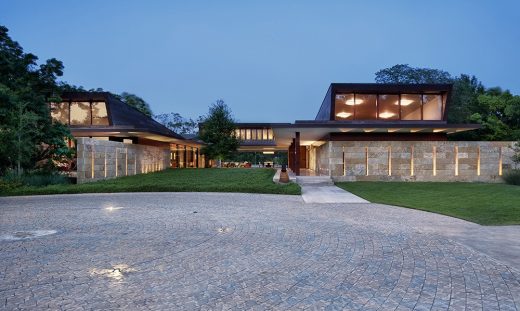
photograph : Paul Finkel, Piston Design
Annie Residence in Austin
Design: Bercy Chen Studio, Architects
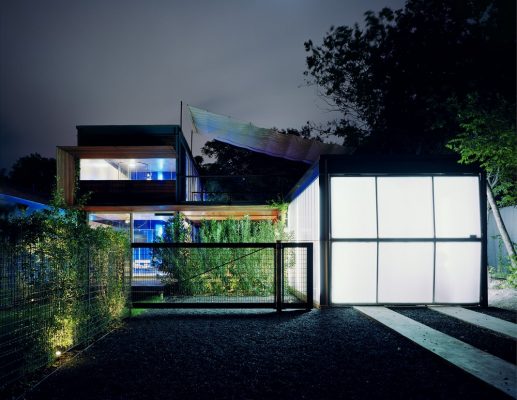
photo from architects
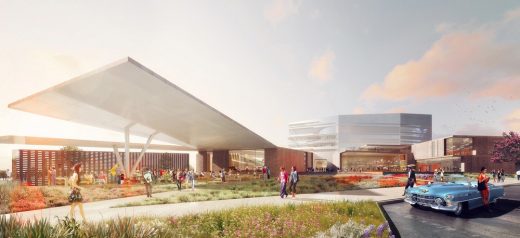
image from architect
Buddy Holly Hall of Performing Arts and Sciences in Texas
Observation Tower at Circuit of the Americas Texas
Texas Exes Alumni Center Austin Building
Contemporary Rollingwood House, Travis County
Design: Bade Stageberg Cox, Architects
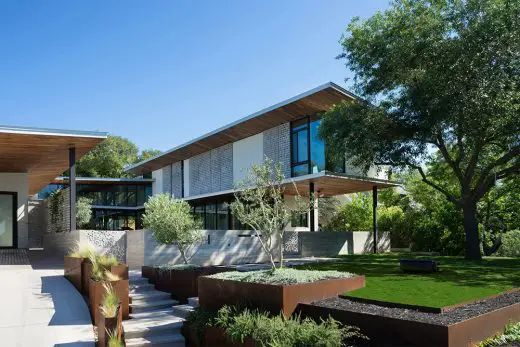
image from Chicago Athenaeum
American Architecture Designs
American Architectural Designs – recent selection from e-architect:
Comments / photos for the Westridge Residence in Austin, Texas Architecture design by Miró Rivera Architects page welcome.

